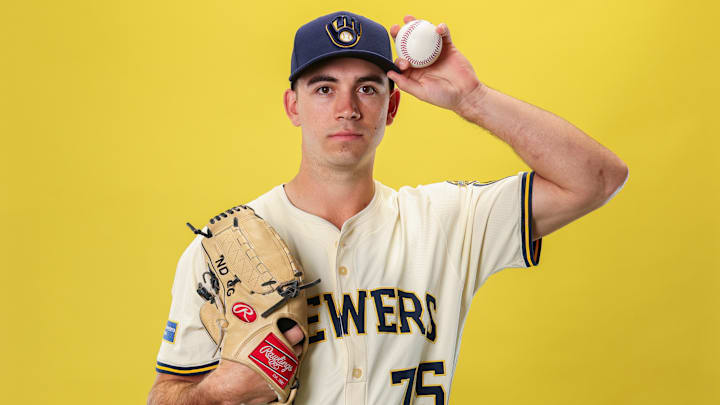The Milwaukee Brewers are in an enviable position, stockpiled with arms and navigating a 2025 playoff push with an embarrassment of pitching riches. Another name among them that has sparked quiet anticipation is Robert Gasser, the promising left-hander who had his rookie campaign abruptly halted due to injury last year.
Gasser, 26 years old, made an immediate impact when he debuted in 2024. The Brewers won every single one of his five starts. He posted a sharp 2.57 ERA over 28 innings, striking out 20 and walking just four. His poise and polish suggested he was ready to be a fixture in the rotation. But just as the buzz around him was building, Gasser’s elbow gave out. Diagnosed with a torn ulnar collateral ligament in his left arm, he underwent Tommy John surgery in June of that year, ending his rookie season just as it was getting started.
Robert Gasser’s comeback adds to Brewers’ growing pitching wealth
Now, after more than a year of recovery and rehab, Gasser is nearing a return. Brewers manager Pat Murphy confirmed this week, as reported by Curt Hogg of the Milwaukee Journal Sentinel, that the organization intends to build Gasser back up as a starter. But the caveat is worth noting: should a need arise later in the season, Gasser, and a few others in his position, could be shifted into a bullpen role.
Pat Murphy said today that the Brewers will build Robert Gasser up as a starter, but if/when a need arrives late in the season, he could be moved to a relief role. Same applies to Chad Patrick, Logan Henderson and Tobias Myers.
— Curt Hogg (@CyrtHogg) August 1, 2025
That’s not necessarily a demotion, and in Milwaukee, it might even be a rite of passage. Murphy included fellow arms Chad Patrick, Logan Henderson, and Tobias Myers in that conversation of starters being prepped for potential late-season versatility. It’s a strategy the Brewers have leaned into, and it’s yielded real value. Both DL Hall and Aaron Ashby, initially developed as starters, have proven effective in relief roles, providing much-needed depth and high-leverage innings during crucial stretches.
It also underscores a cultural strength within the Brewers’ clubhouse: a willingness to sacrifice individual roles for team success. Converting from starter to reliever isn’t always a smooth transition, mentally or physically — but Milwaukee has built a pitching infrastructure that allows for those changes to stick. And more importantly, they’ve fostered a mindset that embraces flexibility over ego.
That’s not universal across baseball. Pitchers like Aaron Civale made headlines for pushing back on role changes, believing their value lies solely in the rotation, which then resulted in a trade to the Chicago White Sox. In contrast, the Brewers continue to benefit from arms that buy into the bigger picture, something that speaks volumes about both the players and the development system in place.
For Gasser, the return is about more than just reclaiming a spot. It’s about slotting back into a team that has grown stronger in his absence and finding the right way to contribute. Whether that’s as a rotation weapon in September or a bullpen arm during the playoff chase, Milwaukee believes he’ll make an impact.
